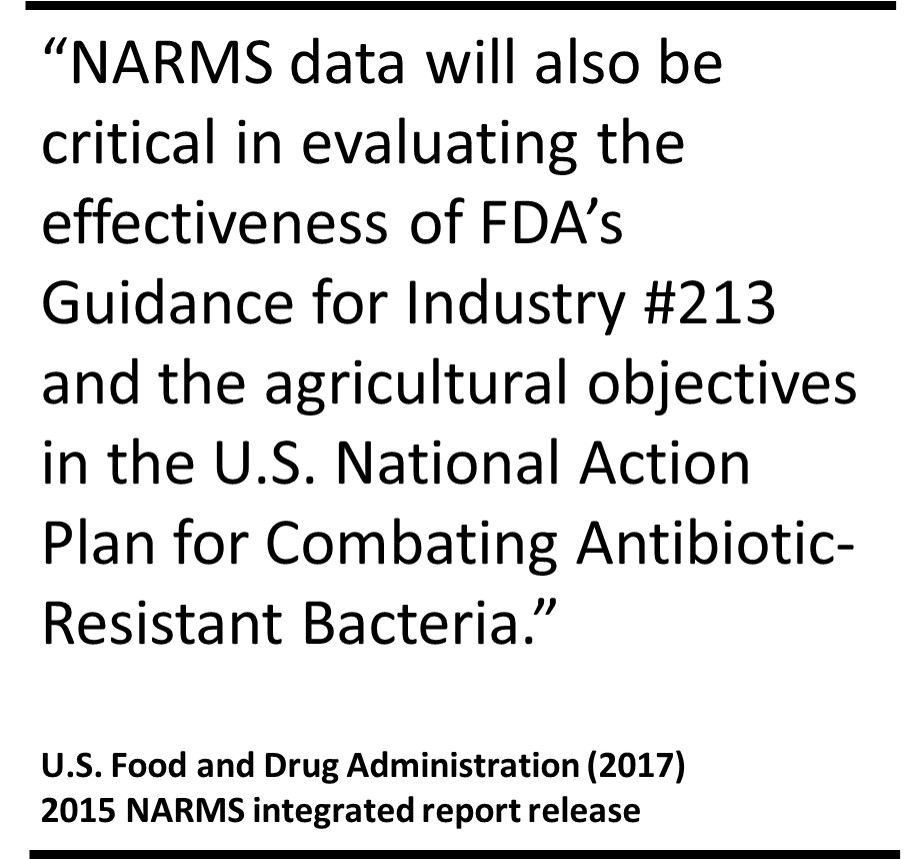



FDA releases 2015 NARMS integrated report
On October 23rd 2017, U.S. Food and Drug Administration (FDA), along with partners, Centres for Disease Control and Prevention (CDC) and the U.S. Department of Agriculture’s Food Safety and Inspection Service (USDA) released the annual National Antimicrobial Resistance Monitoring System (NARMS) integrated report.
The report illustrates antimicrobial resistance patterns surfacing in both familiar and emerging bacteria present in isolated samples of human tissue (by CDC), raw retail meats (by FDA), and animals at slaughter (by USDA), using both genetic and interactive data analysis to allow users to investigate the progression of resistance and the genes influencing such progression.
The development of Whole Genome Sequencing and data visualisation tools has, and will be, critical to predicting antimicrobial resistance and disease outbreaks which the FDA, CDC and USDA will continue to use in the progression of NARMS research.

To date, NARMS has been pivotal in providing public health officials with evidence and advice on the patterns of antibiotic resistance in food-borne bacteria, allowing for effective decisions to be made on using antimicrobial drugs safely and effectively in animals.
Findings of the 2015 NARMS integrated report
“Seventy-six percent of Salmonella isolated from humans had no resistance to any of the 14 antimicrobial drugs tested;
Multidrug resistance (MDR) increased from 9 percent to 12 percent of human Salmonella, driven largely by an increase in combined resistance to ampicillin, streptomycin, sulphonamides, and tetracycline among Salmonella serotype I 4,[5],12:i:-.
Ceftriaxone resistance either continued to decline or remained low in nontyphoidal Salmonella from all NARMS sources except turkey hazard analysis and critical control point (HACCP) samples, where the percent resistance in 2015 (15.7 percent) was the same as 2010 levels.
While still rare, azithromycin resistance occurred in Salmonella, in some cases in strains with resistance to other antibiotics.
Erythromycin resistance in Campylobacter coli increased three-to five-fold between 2011 and 2015 in isolates from humans (2.7 percent to 12.7 percent) and from chicken carcasses (3.4 percent to 12.8 percent).
Transmissible quinolone resistance in Salmonella may be increasing. The underlying resistance traits reside on mobile genetic elements and therefore have the potential to be shared, either alone or together with other resistance genes, with susceptible strains of Salmonella.
From 2014 to 2015, there was a decline from 73 percent to 57 percent in the proportion of retail ground turkey Salmonella isolates resistant to at least one antimicrobial. Historically, the majority of isolates from turkey sources have been resistant to at least one antimicrobial.”
As reported by the U.S. Food and Drug Administration (2017).







